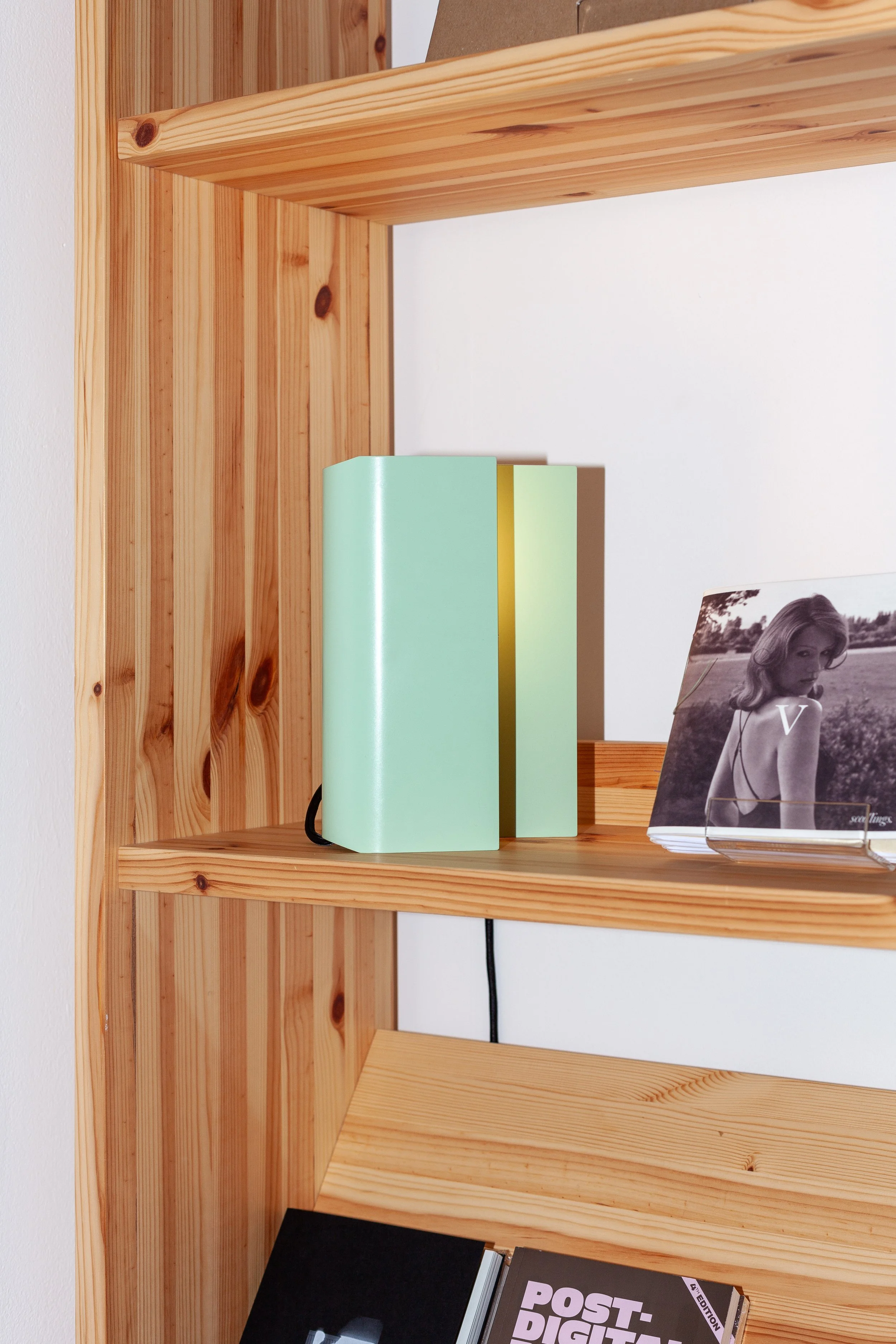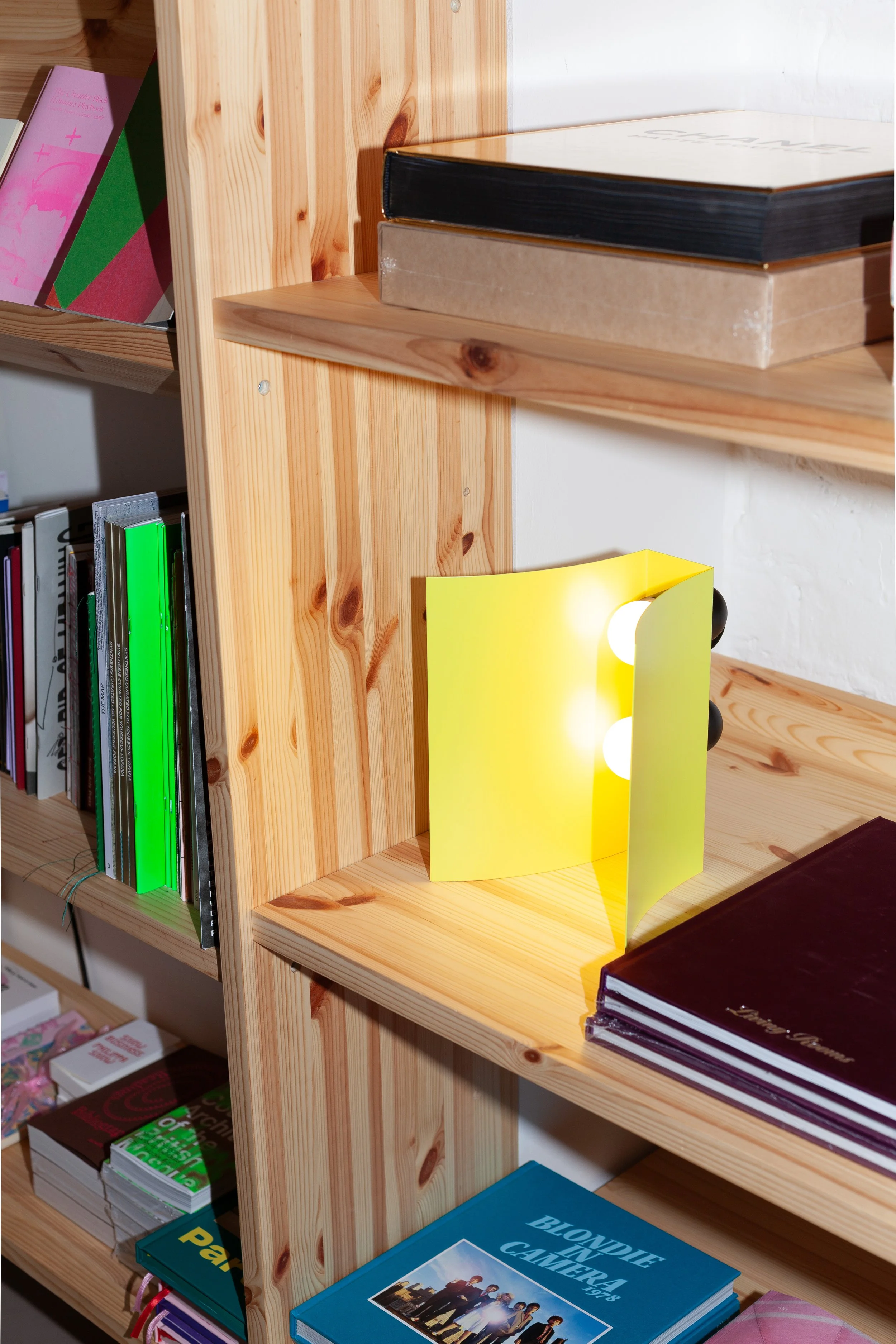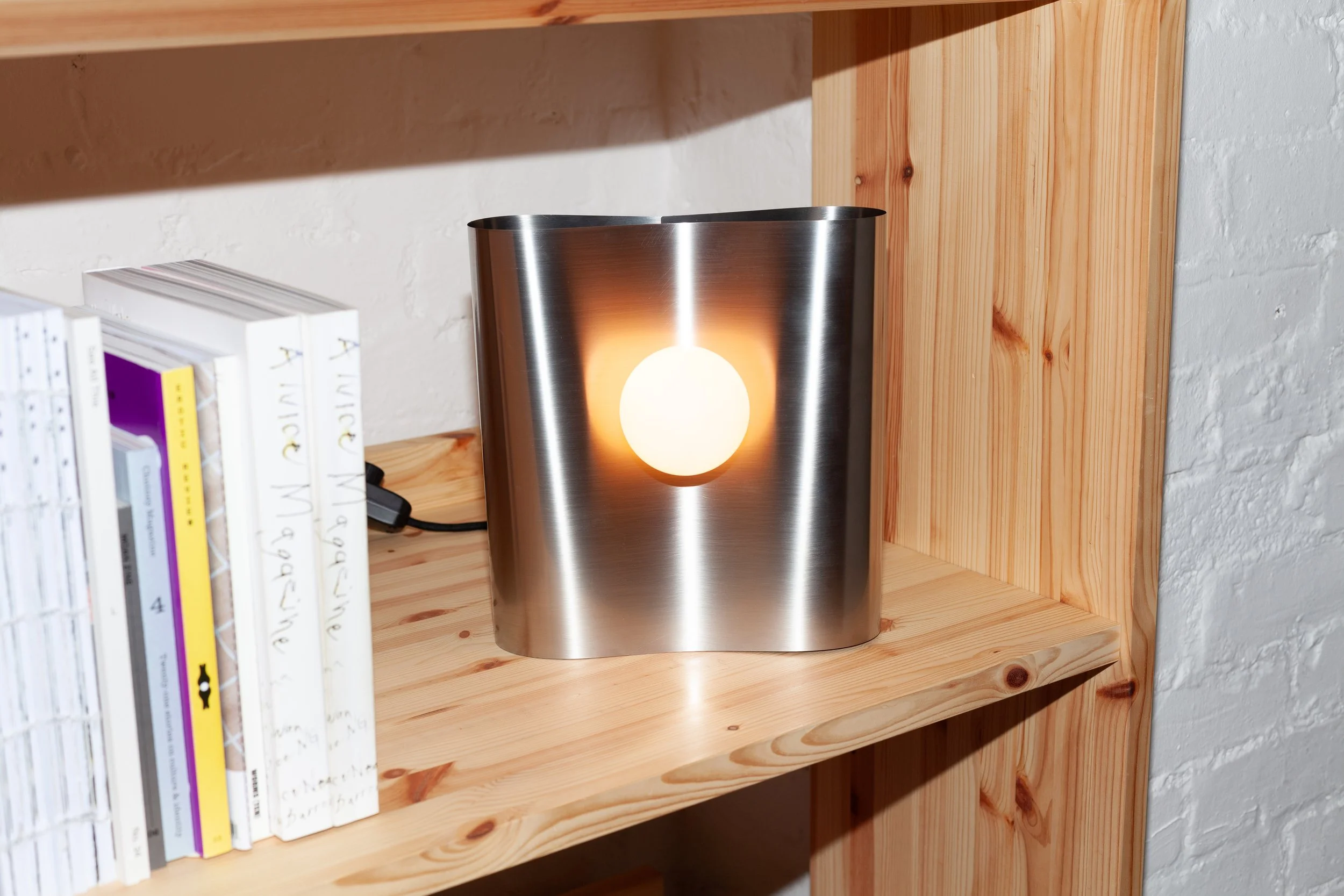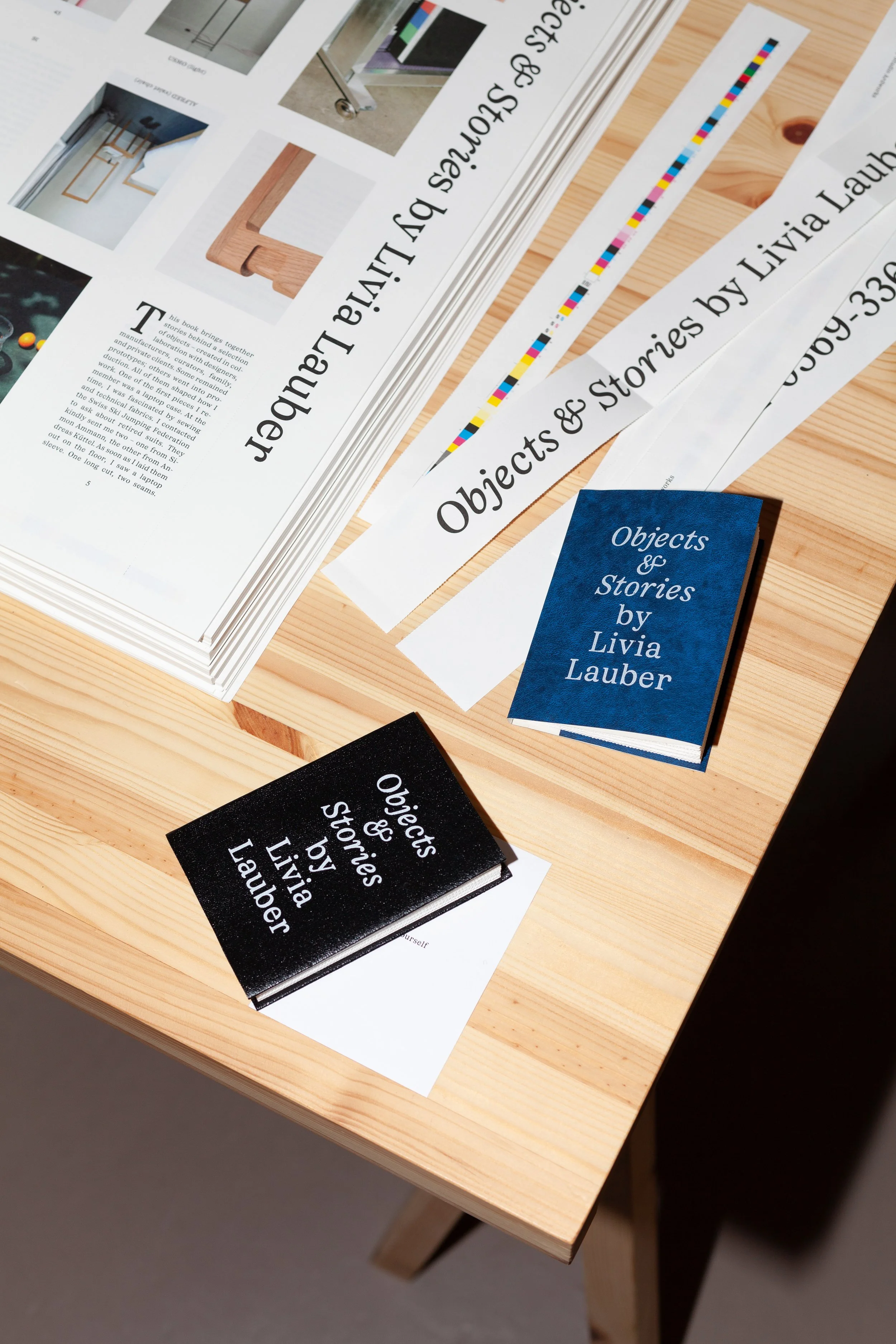Illumination Through Books
A Paper Light by Livia Lauber, on display at Tenderbooks as part of Objects & Stories (photograph: courtesy of Livia Lauber).
“It wasn’t a complete blank sheet,” says designer Livia Lauber of the brief she received from Tamsin Clark, owner and director of the Tenderbooks bookshop in central London. Faced with this, Lauber responded with lamps whose forms, deliciously, mirror those of a completely blank sheet.
Paper Lights are a trio of folded steel lamps that all correspond to the shapes of printed matter. One curves around its bulb like a page of a book bowed under compression, providing indirect lighting, while another opens up as a dust jacket, the two bulbs it houses in its spine shining out like a dressing room vanity. The third, meanwhile, is a loop of metal, squeezed in its centre to recall a rolled newspaper slipped under a commuter’s arm. “Tamsin was so enthusiastic and open to whatever I wanted to do,” says Lauber, “But she did say that it would be good if it had something to do with books.”
Photograph: courtesy of Livia Lauber.
The project grew out of Lauber’s earlier Bockshelf project, a mobile bookshelf hacked together using the Swiss design company USM’s Haller system. Bockshelf was created for Adaptations, an exhibition of experimental work that USM staged at London’s Aram Gallery, with its jaunty diagonal angles breaking out of the strict linearity to which the Haller grid is typically applied. Lauber’s bookshelf caught Clark’s eye, who subsequently invited the Swiss designer to stage an exhibit of her past work at Tenderbooks during the London Design Festival. Funding from the Swiss Cultural Fund UK then enabled the development of Paper Lights as a new commission, with these different strands all coming together to create the final exhibition: Objects & Stories.
Within Tenderbooks, Lauber’s Paper Lights nestle amongst its shelves of independent zines, art books and journals, casting a soft light across the shop’s library with their round frosted bulbs. For Objects & Stories, they illuminate the display of Lauber’s past work, with the exhibition including her gently iridescent Taverna carafes, gleeful Disco bottle opener, and mischievously ambiguous Lemontoy squeezers. “It's an assembly of the work that I've done in the past,” Lauber says, “which has been good for me to process things a little bit.” Set amongst Lauber’s catalogue of work, Paper Lights embody traits that recur throughout her design practice. The lights are witty and generously characterful, for instance, but their charm is achieved through a rigorous economy of material and process. The light fittings are standard components sourced from Hay, avoiding the expense and complexity of developing and certifying a custom element, with their black plastic bodies allowed to protrude cheerfully from the delicate folded steel, power coated in shades of sunshine yellow and soft mint.
Photograph: courtesy of Livia Lauber.
Throughout Lauber’s career – which has seen her lead industrial product development at Established & Sons, as well as found the experimental, craft-focused product brand Ensemble – she has valued the potential for objects to tell stories and trigger an emotional response in audiences, yet couched this in a clean and precise attention to making and materiality. Her Tipsy glasses, designed with Loris Jaccard, are superbly squiffy drinking vessels (for which an even more slumped “Drunk” version also exists), created through the careful application of heat to Duralex Picardie glasses, while her Wonderground placemats, also designed with Jaccard, smartly convert the robust and mundane rubber of Tube train floors into confetti-like bursts of tabletop colour. Wit abounds throughout Lauber’s design catalogue, but never to the detriment of complicating the material and production stories she wishes to tell.
In Paper Lights, the design’s elegant, simple construction has been left similarly clear and legible, allowing their visual impact to come to the fore. While this emphasis on economic storytelling has been present in Lauber’s design work since the beginning, “it's becoming a bit more streamlined,” she notes. With this in mind, the final flourish of Objects & Stories is a pocket book detailing Lauber’s past projects, designed by Guillaume Chuard of Studio Ardworks.
Photograph: courtesy of Livia Lauber.
Printed on a perforated sheet, the book is designed to start life as a single-sheet poster, detailing imagery of Lauber’s work, as well as the stories of their creation. This sheet can then be peeled apart, with the resultant pages folded back together to form a chapbook of Lauber’s designs – a publication in miniature, yet created in the same way in which all books are produced. “We wanted to have something that people could take with them, and because it's a book shop, it was nice to actually do a book,” Lauber says. “But what I really like about this process is that you can see how it’s made, understand better how books are produced, but it’s still quite fun.” In this respect, like the stainless steel book lights that illuminate their paper equivalent, it is a fitting summation of Lauber’s design ethos as a whole.
Words Oli Stratford




